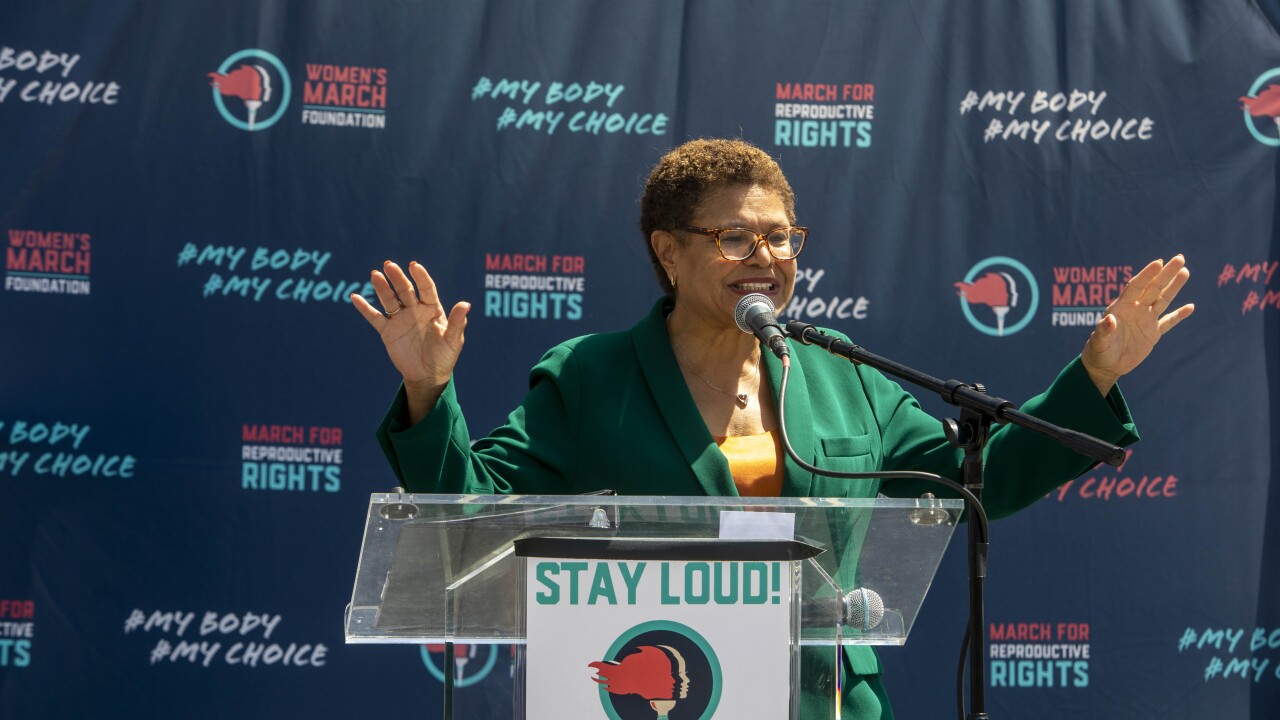Retail buyers in the primary market mopped up California’s first general obligation issue of 2011 on Monday, but secondary trading was quiet as investors chose to wait for some major deals pricing later in the week.
California’s $2.5 billion GO deal was “getting eaten up pretty fast,” according to a trader in San Francisco, who wondered if there would be any serial bonds left for institutional buyers in Tuesday’s scheduled pricing.
Rated A1 by Moody’s Investors Service and A-minus by Standard & Poor’s and Fitch Ratings, the new-money portion of the deal was priced with yields ranging from 1.13% in 2015 to 4.80% in 2041.
California’s 10-year spot yielded 3.17% on a 3.25% coupon, offering a spread of 122 basis points over the comparable Treasury. In ratio terms, it offered 162%.
More than 30 underwriters were working to sell the bonds, led by Bank of America Merrill Lynch and Stone & Youngberg.
About half the deal was offered to retail on Friday. Monday’s sale opened for refunding bonds maturing in 2017, 2018, 2021, and 2022, and for the 2032 maturity of the new-money series.
The refunding deal offered yields from 0.67% in 2013 to 4.58% in 2031.
Appetite for the bonds set the tone for the broader market. According to Municipal Market Data, the muni yield curve flattened as one-year note yields rose two basis points, intermediate bonds were flat, and longer-term yields were cut two or three basis points.
The 10-year muni yield remained at 2.13%, or six basis points up from the all-time low recorded early last week. The 30-year yield fell three basis points to 3.67%, and the two-year yield stayed at 0.32%
“People aren’t quite sure of price transparency in the overall market,” a trader in New York said.
Buyers, he added, are delaying purchases until Wednesday, when two highly rated states, Massachusetts and Ohio, sell competitive deals worth $475 million and $300 million, respectively.
“If you’re a trader looking at the overall market, those are the two issuers you’ve got to look at,” he said, adding that Wednesday afternoon will also feature the closely watched monetary policy statement from the Federal Open Market Committee.
Meantime, renewed debt concerns in Europe caused a sweeping rally in Treasuries.
The benchmark 10-year Treasury yield finished 10 basis points lower than its Friday close, at 1.95%. The 30-year yield firmed 10 basis points to 3.22%, and the two-year yield fell two points to 0.16%.
Such moves acted as makeup to help munis appear a little more attractive. The 10-year muni-Treasury ratio jumped to 109% — easily high enough to draw in crossover buyers — versus 102.9% on Friday. The 30-year ratio climbed to 114.3% from 111.1%.
MMD analyst Randy Smolik suggested that even though ratios are quite attractive, dealers aren’t in buying mode.
“Dealers seemed focused on freeing up capital ahead of this week’s hefty calendar of $7.3 billion tax-exempts,” he wrote Monday. “With third quarter end looming, it could be another reason why the street was cautious.”
New issuance is on the rise, with The Bond Buyer’s 30-day supply just under $11 billion. The end of the quarter, when dealers want to book profits, is two weeks away. And yields, though attractive versus Treasuries, remain ugly by nominal standards.
Muni research analysts continue to focus on President Obama’s revenue-raising proposal to cap the tax-exemption of municipal bonds at 28%.
For investors in the 35% marginal tax rate — those earning $250,000 per year as a couple, or $200,000 individually — this proposal in the jobs plan would permanently transform tax-exempt bonds to lightly-taxed ones.
Cash flow from tax-free munis would be taxed at a rate of 7% if the Bush tax cuts are permanent, 11.6% if they are not. The tax rate would also be higher for some if the “Buffett Rule” — Obama’s name for a new marginal tax rate for millionaires — were adopted.
The White House says the new marginal rate, floated without specifics by the president on Monday as part of a $3.8 trillion long-term deficit reduction plan, would apply to 0.3% of the population.
According to JPMorgan, about half of all individual holders of municipal bonds earned more than $200,000, as of 2009, meaning that roughly one-third of the entire investor base would lose their full tax-exempt benefits.
George Friedlander, chief muni strategist at Citi, said in a Friday research note that the market has ignored the jobs bill on the assumption that it’s dead on arrival. However, because it opens up the question of retroactive taxation on munis and threatens the low-cost funding of state and local governments, it can’t be ignored completely.
“The risk to the tax-exempt market may be reduced capacity for state and local governments to issue new bonds and not a new tax on bondholders,” Friedlander wrote.
Similarly, the muni team at Samson Capital Advisors said “the most unsettling aspect” of the bill isn’t the new tax per se, but “the retroactive nature of this legislation.” The bill, as proposed, would take effect in 2013, yet apply to all outstanding muni debt.
“The introduction of a special tax rate for municipal bond income creates the risk in the future that the special rate can be changed, which would make 'tax risk’ a more tangible component of municipal pricing,” a Samson note published Monday said.
Yet the Samson group isn’t convinced the proposal would necessarily be harmful to the muni market. They note that muni bonds would still be viewed as attractive given their durable credit quality and often wide spreads to taxable debt.





